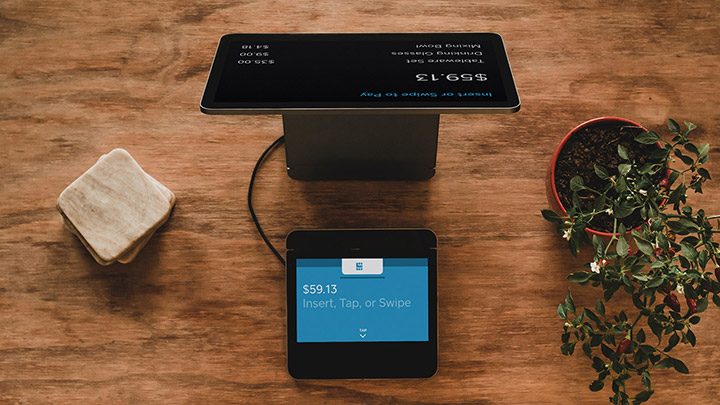In today’s digital landscape, cyberattacks and data breaches are growing threats facing organizations of all sizes. However, small and medium-sized businesses (SMBs) can be especially vulnerable to cybersecurity risks. Limited resources, lack of dedicated IT staff, and perceived weaknesses in defenses make SMBs prime targets for hackers and cybercriminals.
The impacts of these attacks can be devastating, resulting in lost revenue, damaged reputation, and even bankruptcy. Unfortunately, many SMBs do not take cybersecurity seriously enough, lacking robust protections, response plans, and employee training.
This article will examine advanced threat detection and automated response – two critical capabilities for SMB cybersecurity today. We will examine modern techniques for real-time monitoring, behavior analytics, and threat intelligence gathering. Additionally, the piece will outline the key benefits of security automation and orchestration in responding to detected incidents. Our goal is to demonstrate to SMB owners and leaders that cybersecurity may seem daunting; taking the proper steps to implement threat detection and response can be simple and inexpensive. With the right solutions, even small businesses can effectively protect their data and defend against cyberattacks.
What is Threat Detection?
Threat detection is all about finding and identifying cybersecurity dangers targeting your business. It’s like having security cameras around your company’s computers and networks, constantly keeping watch for anything suspicious.
Advanced threat detection uses special software and systems to automatically monitor what’s happening across your IT environment. It’s looking for signs of potential attacks, data breaches, malware infections, and other incidents 24/7.
Some standard threat detection tools include:
- SIEM – Security information and event management software collects log data from all your systems in one place. It uses analytics and intelligence to detect threats.
- Endpoint detection – Software on devices like laptops and servers can identify malicious activity locally.
- Network traffic analysis – By inspecting network activity, threats like denial of service attacks can be spotted.
- Anomaly detection – Comparing normal behavior to current events helps uncover unusual activity that may be an attack.
- Behavior analytics – Machine learning models can determine if a user or system is acting abnormally based on past patterns.
Threat detection works by gathering lots of security data from across your environment. It looks for matches to known indicators of compromise from past attacks. Things like IP addresses, malicious file hashes, and phishing email sender addresses.
It also uses techniques like machine learning to flag activity that seems out of the ordinary. Even if it’s not a recognized threat, strange behavior could mean an attack is underway.
The key benefit of threat detection for small businesses is getting alerted to issues early and quickly. The sooner you can detect a cyberattack, the less damage it can do. Faster detection gives you more time to respond and contain the incident.
Advanced threat detection goes beyond just blocking what your firewall catches at the network edge. It provides visibility into what’s happening on the inside. No matter how an attacker gets in, whether through phishing or exploiting a vulnerability, threat detection aims to rapidly uncover it.
What is Threat Response?
Threat detection tells you something terrible is happening in your systems. The threat response is all about taking action to stop and contain the attack. The goal is to limit the damage and prevent stolen data from leaving your network.
Threat response relies on automating security processes as much as possible. This is done through platforms called SOAR – security orchestration, automation and response. SOAR takes the alerts from your threat detection tools and triggers appropriate countermeasures.
For example, if abnormal activity is detected from a user’s laptop, the SOAR platform could immediately isolate that device from the rest of the network. It could also restrict the user’s remote access and prompt for a password reset in case their credentials were compromised.
Other common threat response actions include:
- Blocking malicious IP addresses or domain names
- Quarantining or deleting infected files
- Killing running processes associated with malware
- Adding new firewall rules to halt communication with command and control servers
The key is that these actions can be taken instantly and automatically after a threat is detected. SOAR platforms allow you to define playbooks or workflows for different incident response scenarios.
SOAR also helps coordinate the human side of the response. It can notify your security team about the incident and create a ticket for investigation. The platform tracks all the response activity so that everything runs smoothly.
Fast, automated response is critical because attacks unfold rapidly. The longer an attacker remains active in your environment, the more damage they can inflict. SOAR allows your security program to scale and react at computer speed.
Integrating threat detection and response results in a complete cybersecurity solution. Advanced threat detection finds the threats, while SOAR platforms enable you to do something about them in real time. Together, they make your small business resilient in today’s sophisticated attacks.

Key Components of Threat Detection and Response
Threat detection and response relies on several key capabilities working together to protect your business. Understanding these components provides insight into how advanced systems detect and react to cyberattacks.
Threat intelligence is critical for identifying known threats before they strike. Threat intel provides information on threat actors, their tools, techniques and procedures. By recognizing signs of known attacks, defenses can be updated proactively.
Behavioral analytics and anomaly detection work together to spot unknown threats. By establishing a baseline for regular activity, abnormal events stand out as potentially malicious. Even if a threat is brand new, strange behavior can indicate compromise.
Machine learning and artificial intelligence take behavioral analytics to the next level. Advanced AI systems can analyze massive amounts of data to find subtle indicators of compromise. They get smarter over time as new threats emerge.
Once a threat is detected, incident response processes kick in to investigate and contain it. Security teams need playbooks and procedures to guide response and minimize attack damage. Response plans should be tested and updated regularly.
Threat intelligence feeds into response plans, providing the context around threat actors and campaigns. This intelligence enables choosing the right actions to disrupt an attack based on who the attacker is and what they want.
Security teams rely on automation through SOAR platforms to scale response across an organization. SOAR allows responding immediately without the delays of manual processes. Integrating threat detection and SOAR is key for fast, effective threat response.
Challenges and Considerations
Implementing robust threat detection and response capabilities does come with some challenges for small businesses. It’s essential to go in with eyes wide open.
Cost is often the first concern, as advanced security solutions seem expensive. However, when weighed against the potential costs of a breach, strong defenses provide excellent ROI. There are also managed services that help reduce staffing overhead.
Integration with existing systems is another common hurdle. Older security tools may need more APIs to connect with threat-detection platforms. Ripping and replacing everything is unrealistic, though. A phased approach can work by starting with newer cloud-based tools.
Many small businesses also need more skilled staff to run complex security operations. Getting the most value does require training personnel to use new systems and developing playbooks. Consider partnerships with MSSPs to augment internal resources.
Tuning systems to minimize false positives takes effort, too. Wrong alerts waste time and frustrate staff. Start with pre-configured use cases and tweak detection rules carefully. AI helps automatically suppress noise over time.
No detection is perfect, so that some threats will slip through. But letting perfection be the enemy of good enough leaves you vulnerable. Something is far better than nothing when it comes to threat detection.
The most critical consideration is commitment. Leadership must dedicate budget and staff to get value from detection and response. Cybersecurity must be embraced as an ongoing business priority rather than just a one-time project. The threats are not going away, so your efforts can’t either.
By understanding these challenges upfront, small businesses can prepare for what it takes to implement threat detection and response successfully. Given today’s elevated cyber risks, the capabilities are well worth the investment and effort.
Why SMBs Need Threat Detection and Response
Advanced threat detection and automated response are critical capabilities SMBs need to survive in today’s threat landscape. They provide 24/7 monitoring to uncover attacks and immediate response to minimize damages rapidly.
Key benefits include:
- Early detection before significant damage is done
- Faster containment to limit stolen data and costs
- Increased visibility into threats inside the network
- Better protection for sensitive customer and employee data
- Reduced workload for IT staff with automated response
- Scalable security that grows with your business
SMBs can no longer ignore cyber risks. Technology-enabled criminals and hacktivists target small businesses, seeing you as an easy mark. But with the right threat detection and response solutions in place, you can disrupt attackers early and protect what matters most – your data, reputation and bottom line. The capabilities are affordable, accessible and worth investing in.

Key Takeaways
- Advanced threat detection provides 24/7 monitoring to uncover cyberattacks targeting your business rapidly.
- Automated threat response platforms immediately contain incidents to limit damages and data theft.
- Behavior analytics and machine learning spot subtle anomalies that indicate new, unknown threats.
- Integrating detection and response results in robust, scalable cybersecurity tailored for SMBs.
- Challenges like costs and complexity must be addressed but outweigh the benefits.
- Threat detection and response delivers essential visibility and protection for sensitive data and systems.
- The capabilities are affordable, accessible and a smart investment given today’s elevated threats.
Protect Your Business with ZZ Servers
ZZ Servers provides comprehensive IT and cybersecurity services for small and medium businesses in Virginia. With over 17 years of experience, we are the trusted technology partner for organizations that need reliable support and protection.
After reading this article, you understand why threat detection and response are essential for defending against modern cyberattacks. But you don’t have to tackle these challenges alone.
Our experts can help implement solutions tailored to your unique environment and budget. We offer:
- Managed threat detection powered by leading platforms
- Incident response retainers for rapid containment
- Security awareness training for your staff
- Compliance assessments to identify vulnerabilities
- Ongoing monitoring and management of your defenses
Don’t wait until it’s too late – a breach could cripple your business. Contact ZZ Servers today at 800-796-3574 to get started securing your company. Our team is here to provide the technology support and cybersecurity vigilance you need to grow confidently.
Frequently Asked Questions
What is threat detection?
Threat detection involves constantly monitoring your systems and network to identify potential cybersecurity dangers like malware, unauthorized access, or abnormal behavior that could indicate an attack. Advanced threat detection uses specialized tools like SIEM and behavioral analytics to uncover threats automatically.
What is threat response?
Threat response refers to the actions taken to contain and neutralize threats once they are detected. This typically involves automated processes and platforms called SOAR to respond to incidents and limit damages rapidly. Response steps include isolating infected devices, blocking malicious IP addresses, killing processes, and notifying security teams.
Why is threat detection important?
Threat detection provides visibility into attacks targeting your business. Catching threats early limits the damage they can inflict before they become full data breaches. Rapid detection is key because attacks unfold quickly, so the faster you can spot them, the better.
What are the benefits of automated response?
Automated threat response through SOAR platforms enables responding to incidents immediately without delays from manual processes. Automation allows understaffed security teams to scale and react at computer speed, essential for effective response.
How can SMBs implement threat detection/response?
SMBs have affordable options like managed detection and response services that provide threat monitoring and expertise. Cloud-based security platforms are also more accessible for small teams to manage than traditional on-prem solutions.



